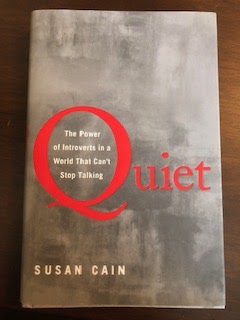On the face of it, How the Grinch Stole Christmas and its spiky protagonist, the Grinch, seem to lack the gentle, sweet-natured tone of many Christmas classics. Yet, this 1957 tale by Theodor “Dr. Suess” Geisel has unexpected charms of its own that have stood the test of time. It’s even inspired several movies that are also holiday staples.
For the rare few who
don’t know the tale, the Grinch is a cranky, odd-looking creature who hates
Christmas for some unknown reason (several theories include his too-tight shoes
or a too-small heart). He lives just north of a land called Who-ville, which is
inhabited by Whos: happy, quirky-looking, Christmas-loving folk of all shapes and sizes.
After many years of suffering through the annual festivities, the Grinch is in no mood for the noise and merriment of Christmas again this year, so he comes up with “a wonderful awful idea” to stop Christmas from coming to Who-ville. He disguises himself as Santa Claus and deputizes his little dog Max as his reindeer. While the Whos sleep, the Grinch invades their homes and loads his sleigh with their stocking stuffers, toys, decorations, and festive food (everything from Who-hash to roast beast).
However, as he tries to stuff a Christmas tree up the chimney, he’s interrupted by a toddler named Cindy-Lou Who, who wants to know why “Santa” is taking their tree. The crafty Grinch tells a smooth story about taking the tree for repairs at his workshop. He then snatches the tree (and the log for their fire) and makes his escape. He repeats this thievery throughout Who-ville.
When finished, he escapes high atop Mt. Crumpet, where he plans to dump the contents of his sleigh. The Grinch waits expectantly to hear Who cries of dismay and sadness as they discover the loss of their Christmas finery. But instead, every Who down in Who-ville is singing. The Grinch hadn’t stopped Christmas from coming; it came just the same. After his initial confusion, he realizes that Christmas must be about much more than the material trappings. And “in Who-ville they say…the Grinch’s small heart grew three sizes that day.” Propelled by his renewed heart, the Grinch brings back the toys and food for the feast—he himself even carved the roast beast.
There are so many things I like about this Christmas classic. I am not always a huge fan of rhyming, but the author uses rhymed verse artfully to draw in and engage the reader, particularly young readers. He also captures the excitement and hope of the season, as the Whos get busy with all kinds of Christmas prep. It reminds me of the thrill and magic of the Christmas build-up when I was young, when the only thing I had to worry about was getting to sleep on Christmas Eve. Perhaps that's why Cindy Lou Who, with her wide-eyed innocence, remains such a beloved character.
The book’s drawings—done by the author—are spare and unique, as are its quirky characters. Although the book was first published in 1957, it never feels outdated, perhaps because we are perpetually able to imagine the Whos and Who-ville in an alternate sphere untouched by time and modern concerns. Sixty-five years ago, I doubt Dr. Suess could have envisioned the commercial madness of Black Fridays and Cyber Mondays, yet his story’s message is more relevant today than ever.
That said, this story is arguably a bit dated in that it focuses exclusively on Christmas. With the current emphasis on acknowledging and honouring a range of other traditions this time of year, who knows how Dr. Suess might have framed this tale if written today. Or, he may have unapologetically held tight to a Who-ville Christmas.
Now about that Grinch—I have a big soft spot for him. Granted, I am always a sucker for a bad boy who grows up a bit in the end, but it’s more than that. As an adult, life can get hard and it’s easy to don a cynical armour and lose the magic of the season amidst stressors, losses, and an out-of-control holiday "to do" list. And, like Charles Dicken’s Scrooge, the Grinch may have a backstory of loss that contributed his seemingly small heart and self-imposed isolation. Whatever the case, the good news is that all is not lost: the Grinch shows us that change is possible, and such change often happens through the inspiration of others.
As an endnote, I’ll add that I’m also a big fan of the 1966 animated version of this book. It did a wonderful job of bringing How the Grinch Stole Christmas to life, with the voice of Boris Karloff, complementary music, and animation that honoured the original illustrations but added a little something extra as well.








